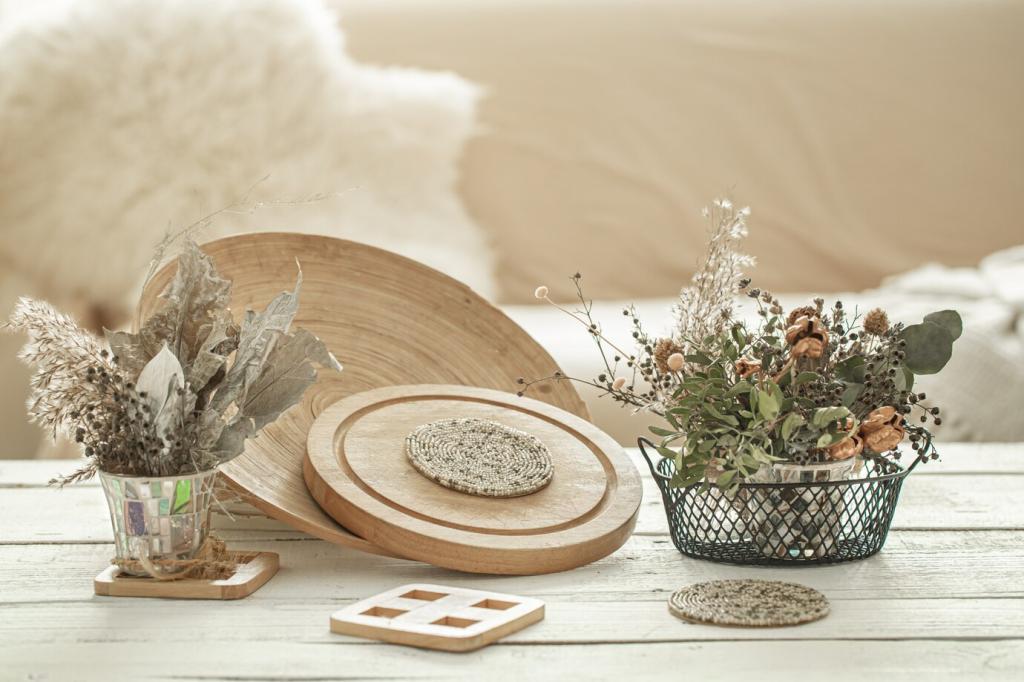Water-Based vs. Solvent-Based Paints: Eco Choices
Chosen Theme: Water-Based vs. Solvent-Based Paints: Eco Choices. Dive into a friendly, practical journey comparing finishes, fumes, and footprints—so you can paint beautifully while doing right by your home, health, and planet. Subscribe and share your questions to shape our next eco-savvy guide.
What Makes These Paints Different?
VOC Basics and Why They Matter
Volatile organic compounds evaporate into indoor air, influencing odor, health, and ventilation needs. Water-based paints typically have lower VOCs, especially low- or zero-VOC lines, while traditional solvent-based formulas off-gas longer. Tell us your sensitivity level and what air-quality improvements you’ve noticed.
Binders, Carriers, and the Science in Your Can
Water-based paints use water as the carrier with acrylic or vinyl-acrylic binders, leading to easier cleanup and faster drying. Solvent-based paints rely on mineral spirits or similar carriers, often offering smoother leveling. Comment if you’ve compared leveling side-by-side on doors or trim.
Certifications and Labels to Trust
Green Seal GS-11, GREENGUARD Gold, and EU Ecolabel help identify low-emitting paints. LEED credits reward low-VOC choices in projects. Check both base and colorants, then share which labels guided your purchase and whether your space felt fresher after painting.
Durability, Sheen, and Real-World Performance
Adhesion and Surface Prep Truths
Great adhesion starts with cleaning and de-glossing, regardless of paint type. Quality primers bridge tough surfaces, including glossy trim or old oil coatings. Have you tried a bonding primer with water-based topcoat? Share your results and any surprise success stories.
Moisture, Kitchens, and Bathrooms
Premium water-based acrylics resist moisture and frequent scrubbing, making them excellent for kitchens and baths. Some solvent-based enamels still excel on high-wear trim. Tell us which paint survived steam, spaghetti splashes, or weekly wipe-downs without dulling.
Yellowing, UV, and Color Hold
Oil-based enamels can yellow over time, especially in low light, while modern acrylics maintain color better. Exterior UV resistance has improved dramatically in water-based lines. Did your off-white trim stay bright? Drop a before-and-after note to help fellow readers choose.
Application Experience and Cleanup
Water-based paints dry fast, helping quick recoats but shortening open time for brushing and rolling. Many pros add extenders for smoother results. Solvent-based paints usually level longer. Which rhythm fits your pace? Comment if extenders changed your finish quality.

Eco Impact Beyond the Label
Packaging, Leftovers, and Waste
Choose right-sized cans, seal tightly, and store in climate-stable areas. Donate leftovers to community projects and recycle empty, dried cans. What’s your best tip for stretching paint across rooms or reusing primer to reduce waste and extra trips?
Waterborne Alkyds and Hybrid Breakthroughs
New waterborne alkyds deliver oil-like hardness with lower odor and easier cleanup. Hybrids balance leveling, block resistance, and environmental gains. If you’ve tested a hybrid on doors or cabinets, tell us how it compared to classic oil enamels over time.
Local Sourcing and Transport Footprint
Buying locally manufactured paint can reduce transportation emissions and support regional jobs. Ask stores about supply chains and recycled content. Have you noticed regional brands outperforming national labels in your climate? Share observations to guide eco-smart choices.
Costs, Coverage, and Long-Term Value
Higher solids often mean better hide and fewer coats. Many premium water-based paints now rival solvent-based coverage. Keep receipts and note square footage to compare real-world spread rates. Tell us your most accurate coverage estimate and how you calculated it.
Scuff resistance, washability, and color retention drive repaint frequency. In many interiors, a quality water-based acrylic holds beautifully for years. Share how long your last paint job lasted before touch-ups, and whether sheen changes influenced upkeep.
Smart sequencing—ceilings, walls, then trim—reduces masking time and waste. Buying during eco-promotions can offset premium costs. Want a downloadable planner and calculator? Subscribe and comment “planner,” and we’ll send our step-by-step budgeting guide.

Health, Comfort, and Indoor Air Quality
Cross-ventilate with fans, open opposite windows, and use filters to capture particulates. Even low-VOC paints need fresh air. Have a favorite setup that clears odor fast without cooling the whole house? Share your airflow tricks for fellow readers.
Health, Comfort, and Indoor Air Quality
For babies, elders, and those with sensitivities, choose low- or zero-VOC water-based paints and paint when they’re away. Allow cure time before reentry. Tell us how you scheduled your nursery or bedroom project and what made it comfortable afterward.
Health, Comfort, and Indoor Air Quality
A reader swapped an older oil-based plan for a zero-VOC acrylic, finished two coats in a day, and hosted friends Sunday without lingering odor. Have a similar win? Post your timeline and what surprised you most about the faster, cleaner process.
Masking, Sanding, and Dust Control
Use low-tack tape, sand lightly for adhesion, and vacuum dust with HEPA filters. Clean starts mean fewer touch-ups and thinner coats. What prep step do you never skip, and which tool changed your results overnight? Share your wisdom.
Storage, Labeling, and Touch-Ups
Decant small amounts into airtight jars for later touch-ups, label with room, date, and sheen, and store above freezing. Have you tried paint preservers? Comment with your best storage hack and how long your touch-up jars stayed usable.
Pets, Kids, and Project Safety
Create no-go zones with temporary gates, plan painting during naps or playdates, and secure trays and solvents out of reach. If you’ve managed a stress-free family paint day, tell us your schedule and snacks that kept everyone happy.
